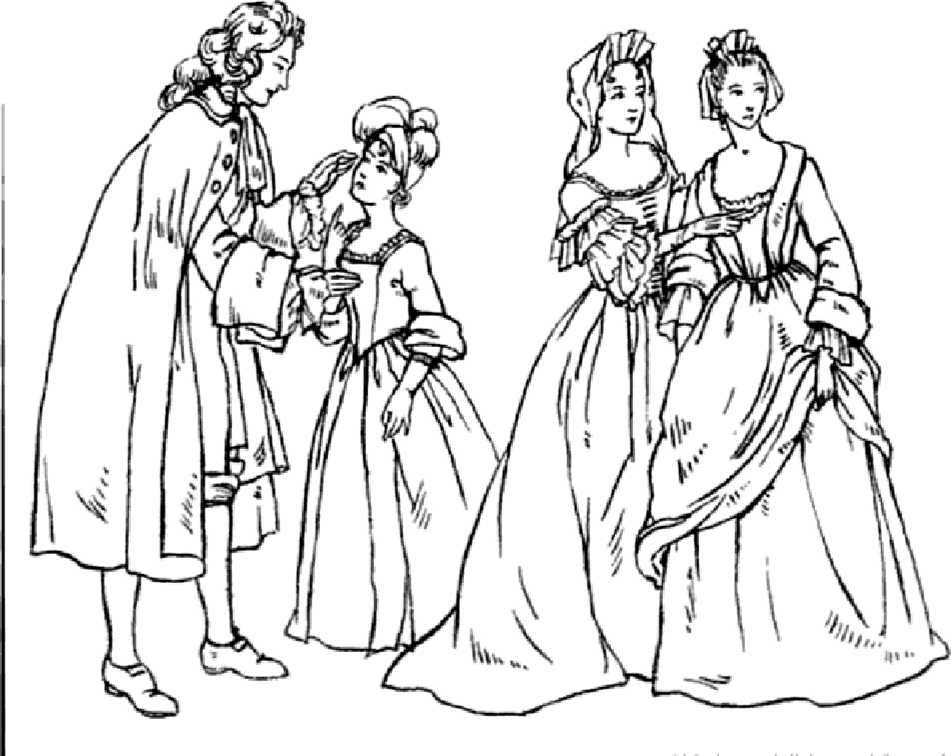TN its earliest and most elaborate form the full-bottomed wig was divided into three masses of curls> two in front of the shoulders and one hanging down the back. Above the forehead the hair rose into two peaks or horns» sometimes exaggerated to grotesque proportions. However, the Bishion served to give increased height to the figure, and a grave dignity to the face. A hat was completely unnecessary, and was often carried in the hand, but when worn, had to be of considerable size. The back of the head was smooth, the artificial cutis forming a fringe at the edge of the wig.
The hoop petticoat made its first appearance in the London streets in 1711, and two English ladies, walking in the gardens of the Tuileries in 1718, set the fuhion in France. It has been suggested that it came from Germany, from some little Court where the great wheel farthingale known to Queen Elizabeth and to Anne of Denmark had survived for more than a century. The revived hoop was at its biggest in England at the end of the other Queen Annc*s reign.
The skirts of a man*s coat were sdficned with wire to make them stand out, but men soon abandoned the attempt to compete with their wives in this particular.
Falbalas came in early in the century. These were crimped or pleated Bounces sewn horizontally round the skirt, and were sometimes of a different material. This was not true of volants or wide rufiles, which were assumed to be part of the original dress.
The F. ng1i$h corset was in general laced at the back, and the whalebone stiffening went right round the body and across the breast. The top edge was srif&ned with a stout wire, and in the lining in front a small pocket was contrived to hold satchets of fragrant herbs. The French corset continued to be laced up the front.






 World History
World History









